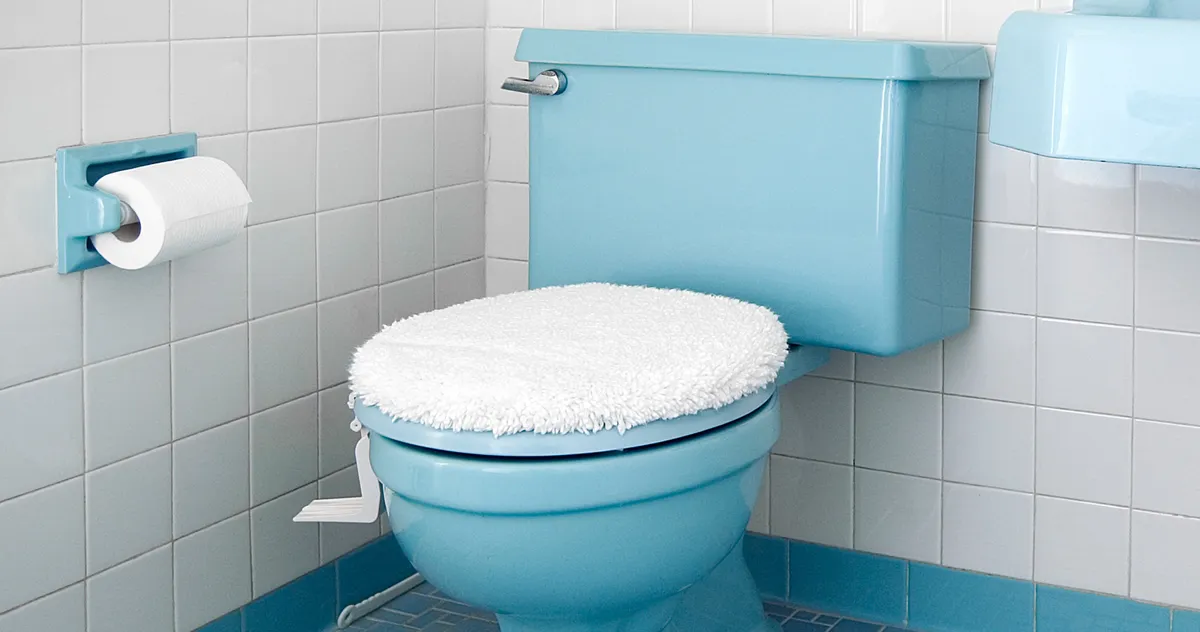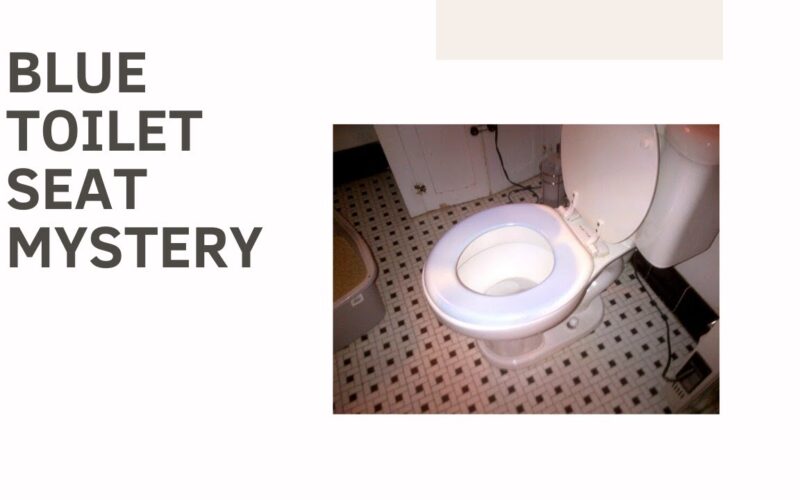Have you ever encountered a peculiar blue hue on your toilet seat and wondered what could be causing it? The phenomenon of a blue toilet seat is not as uncommon as you might think, and it can leave many homeowners scratching their heads in confusion. We will explore the various causes behind a blue toilet seat, and potential health concerns, and debunk some common myths surrounding this intriguing occurrence.
1. The Blue Toilet Seat Mystery Unraveled
The appearance of a blue toilet seat is often the result of a chemical reaction involving certain substances. The color change can be gradual or sudden, and it might leave individuals puzzled and concerned. Understanding the possible reasons behind the phenomenon can help address the issue effectively.

2. Common Causes of a Blue Toilet Seat
a. Toilet Bowl Cleaners: One of the most common causes of a blue toilet seat is the use of certain cleaning products. Some commercial toilet bowl cleaners contain chemicals, such as dyes or acids, which can react with the minerals in the water or with other residues in the toilet bowl, resulting in a blue tint.
b. Copper Pipes: In older homes with copper plumbing, blue staining can occur due to the presence of copper ions in the water. As the copper oxidizes, it can create a blue or greenish tint on surfaces that come into contact with the water, including the toilet seat.
c. Bacterial Growth: In rare cases, certain types of bacteria can cause a blue-green coloration on toilet seats. Bacterial growth may occur in areas with poor sanitation or inadequate cleaning.
d. Water Source: In areas with naturally high levels of minerals like copper or iron in the water supply, these minerals can react with chemicals in the toilet bowl or cleaning products, resulting in a blue discoloration.

3. Health Concerns Associated with a Blue Toilet Seat
The presence of a blue toilet seat is usually harmless and does not pose any direct health risks. If the discoloration is due to bacterial growth or poor sanitation, it may indicate unsanitary conditions that could lead to health issues. To prevent such concerns, maintain proper bathroom hygiene, regularly clean, and disinfect the toilet seat and surrounding areas.
4. Debunking Myths Surrounding the Blue Toilet Seat
a. Pregnancy Indicator: One common myth is that a blue toilet seat indicates pregnancy. This is entirely untrue, as there is no scientific basis for such a claim. Pregnancy can be confirmed through proper medical tests and not by the color of a toilet seat.
b. Toilet Seat Material: Some individuals believe that the material of the toilet seat itself is responsible for the blue hue. While certain materials may react differently to cleaning products or water, the primary cause of discoloration is the chemical reaction between cleaning agents and minerals.

5. How to Address the Blue Toilet Seat Issue
If you encounter a blue toilet seat, there are several steps you can take to identify and address the cause:
a. Check Cleaning Products: Review the toilet bowl cleaner you are using and switch to a non-toxic and dye-free alternative. Opt for cleaners specifically formulated for removing stains without causing discoloration.
b. Inspect Plumbing: If you suspect that copper pipes may be the cause, consider having your plumbing system checked and replaced if necessary.
c. Improve Sanitation: Ensure regular and thorough cleaning of your bathroom, especially the toilet seat, to prevent bacterial growth and maintain a hygienic environment.
d. Water Filtration: In areas with mineral-rich water sources, consider installing a water filtration system to reduce the mineral content in the water and minimize potential reactions.
e. Seek Professional Advice: If the issue persists or you are uncertain about the cause, consult a professional plumber or a water quality expert to diagnose and resolve the problem.
Conclusion
The blue toilet seat mystery may be puzzling, but with understanding, it can be easily addressed. In most cases, discoloration results from a chemical reaction between cleaning products and water minerals. While generally harmless, it can also indicate inadequate sanitation, which should be promptly addressed for a healthy living environment.
Choose the right cleaning products, maintain proper bathroom hygiene, and address plumbing concerns to bid farewell to the perplexing blue hue and enjoy a worry-free bathroom experience. If discoloration persists or health concerns arise, seek advice from professionals for a safe home environment.






